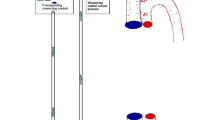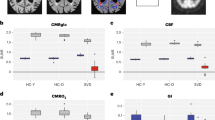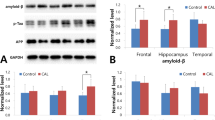Abstract
SEVERAL reports1–3 indicate that some biogenic amines may significantly affect the intensity of the brain tissue reaction to injury, and that 5-hydroxytryptamine may be an essential factor in the production of brain oedema. This study was undertaken to explore this possibility, using as an experimental model brain oedema produced by the application of a cold metal plate to the exposed cerebral cortex of the cat4. This procedure results in severe damage to the upper cortical layers, including the disruption of blood vessels and the development of a vasogenic type of oedema. Vasogenic oedema is characterised by extracellular oedema fluid, containing extravasated serum constituents, spreading preferentially through the underlying and adjacent white matter5. It has been shown that the leakage of serum constituents is confined to the site of cortical injury, and that vascular permeability in the area of oedematous white matter itself, as tested for by protein tracers, remains unchanged6.
This is a preview of subscription content, access via your institution
Access options
Subscribe to this journal
Receive 51 print issues and online access
$199.00 per year
only $3.90 per issue
Buy this article
- Purchase on Springer Link
- Instant access to full article PDF
Prices may be subject to local taxes which are calculated during checkout
Similar content being viewed by others
References
Osterholm, J. L., Bell, J., Meyer, R., and Pyenson, J., J. Neurosurg., 31, 408 (1969).
Osterholm, J. L., and Mathews, G. J., J. Neurosurg., 36, 386 (1972).
Naftchi, N. E., Lowman, E. W., Sell, G. H., and Rusk, H., Arch. phys. Med. Rehabit., 53, 357 (1972).
Klatzo, I., Piraux, A., and Laskowski, E. J., J. Neuropath. exp. Neurol., 17, 548 (1958).
Klatzo, I., J. Neuropath. exp. Neurol., 26, 1 (1967).
Klatzo, I., Wisniewski, H., and Smith, D. E., in Biology of Neuroglia Progress in Brain Research, (edit. by de-Robertis, E. D. P., and Carrera, R.) 15, 73 (Elsevier, Amsterdam, 1965).
Carrodi, H., and Jonsson, G., J. Histochem. Cytochem., 15, 65 (1967).
Maickel, R. P., Cox, R. H., Jr., Saillant, J., and Miller, F. P., Int. J. Neuropharmac., 7, 275 (1968).
Michal, F., and Firkin, B. G., A. Rev. Pharmac., 9, 95 (1969).
Mustard, J. F., and Packham, M. A., Pharmac. Rev., 22, 97 (1970).
Westergaard, E., and Brightman, M. W., J. Neuropath. exp. Neurol. (in the press).
Bjorklund, A., Falck, B., and Stenevi, U., J. Pharmac. exp. Ther., 17, 523 (1970).
Author information
Authors and Affiliations
Rights and permissions
About this article
Cite this article
COSTA, J., ITO, U., SPATZ, M. et al. 5-Hydroxytryptamine accumulation in cerebrovascular injury. Nature 248, 135–136 (1974). https://doi.org/10.1038/248135a0
Received:
Issue Date:
DOI: https://doi.org/10.1038/248135a0
This article is cited by
-
Effect of the Serotonin Antagonist Ketanserin on the Hemodynamic and Morphological Consequences of Thrombotic Infarction
Journal of Cerebral Blood Flow & Metabolism (1989)
-
The Effect of p-Chlorophenylalanine on Cerebral Metabolism and Biogenic Amine Content of Traumatized Brain
Journal of Cerebral Blood Flow & Metabolism (1988)
-
Role of Prostaglandins and Arachidonic Acid Derivatives in the Coupling of Cerebral Blood Flow to Cerebral Metabolism
Journal of Cerebral Blood Flow & Metabolism (1981)
-
Early vascular changes in the spinal grey matter following impact injury
Acta Neuropathologica (1978)
-
The spreading of focal brain edema induced by ultraviolet irradiation
Acta Neuropathologica (1978)
Comments
By submitting a comment you agree to abide by our Terms and Community Guidelines. If you find something abusive or that does not comply with our terms or guidelines please flag it as inappropriate.



